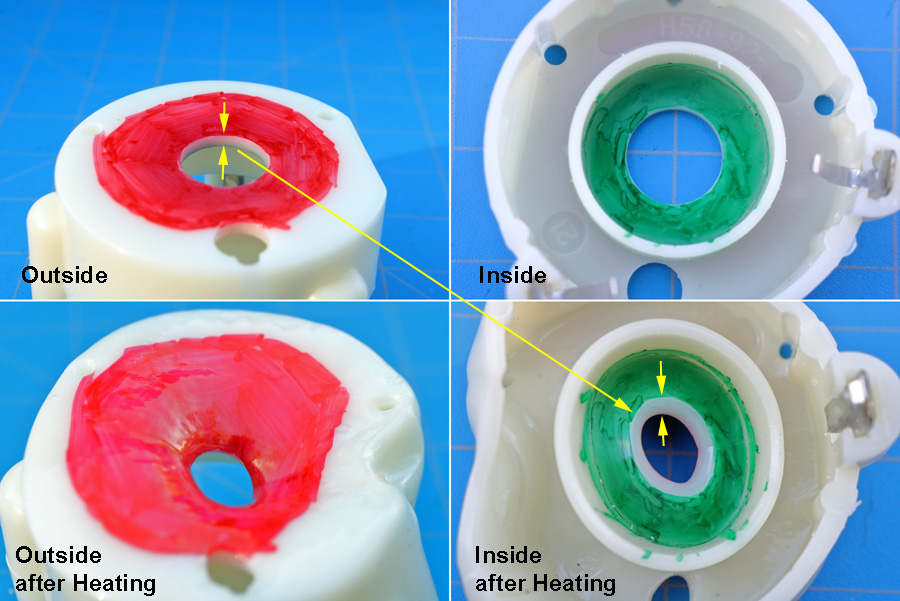For Maximum Resolution, Click on the Body of the Picture.
In many cases, whether a smoke alarm sounded can be determined by enhanced soot depositions around the sound outlets. This occurrs on both the outside and interrior of the smoke alarm. Pressure waves from a sounding smoke alarm will cause soot to collect and form a pattern. Enhanced soot depositions may be around the grill opening and/or the horn opening. The enhanced soot depositions are often referred to as acoustic agglomerations.
In addition to soot collecting on the outside around the horn-opening, there is a matching soot pattern on the inside. Dr. Franco's discovered that when the horn starts to melt, the hole-lip and soot pattern move to the interior of the horn. This is important for two reasons: (1) soot can collect on the outside of a smoke alarm even if it is not sounding, and (2) plastic horns are often compromised by the heat of a fire.
To show that the hole-wall or lip moves to the interior of the horn, the outside of a horn was painted red, the inside of the horn was painted green, and the hole-wall or lip was not painted. The horn was then placed in an oven at 425°F for five minutes.

The smoke alarm in this case failed to notify the occupant of a fire. Heat from the fire caused the hole-lip to move to the interior of the horn. If the smoke alarm had sounded, there would be an observable ring of soot agglomerations starting where the lip ends.
This smoke alarm was defective. One of the pins to the piezoelectric disc was on the wrong side of the disc.
This smoke alarm also failed to notify the occupant of a fire. Again, the hole-lip has moved to the interior of the horn. Again, there is not a ring of soot agglomerations adjacent to the horn lip.